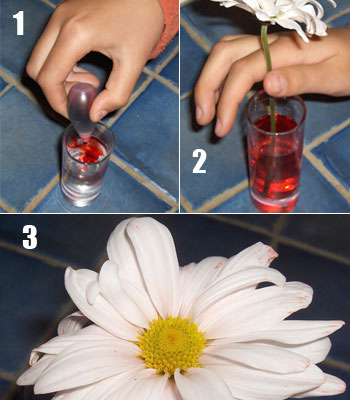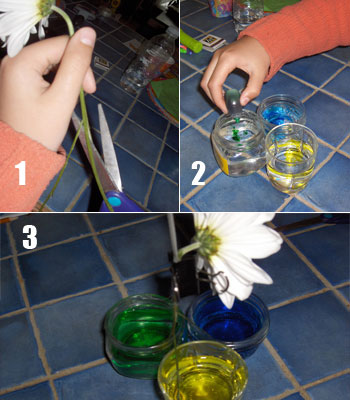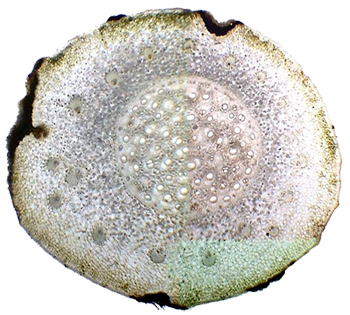 Just one colour
Just one colour
Step 1: Color your water
Dilute a few drops of food colouring in a small glass of water.
Step 2: Place the flower in the glass
Careful, your flower has to stand up straight.
Step 3: Observe
The flower drinks the coloured water through capillary action. After a few moments, the inside of the stem takes on the colour of the food colouring. In less than an hour, you will see tiny coloured spots appear on the end of the flower petals. After a full night, the flower will be completely coloured.
 Two colours or more Two colours or more
Step 1: Colour your water
Dilute a few drops of food colouring in several small glasses of water (one glass per colour).
Step 2: Split the stem
Split the flower stem lengthwise into as many sections as you have colours. Lay the flower on a cutting board; splitting it will be easier.
Step 3: Flower-feeding time!
Place each stem section into a different glass of water, and let nature do the rest! You'll have to find a way to hold your flower up.
 Explanation Explanation
The stem of a flower or a plant is composed of many tiny canals. Each canal is linked to a precise part of a petal. Thus, the canal that is plunged into red-coloured water conducts red water to one petal, but not to the others.
Variations
Try different combinations of colours and different flowers. Or experiment with other types of colouring agents diluted in water, such as vegetable juice or ink. You could also repeat the experiment using a stalk of celery or a paper towel instead of a flower.
|